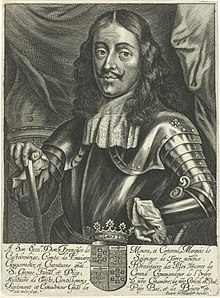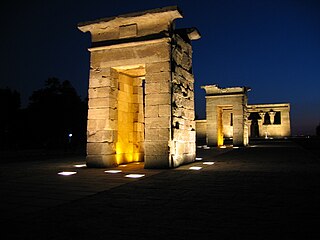
The montaña del Príncipe Pío is a hill in the western part of Madrid, Spain.
Infante, also anglicised as "infant" or translated as "prince", is the title and rank given in the Iberian kingdoms of Spain and Portugal to the sons and daughters (infantas) of the king, regardless of age, sometimes with the exception of the heir apparent or heir presumptive to the throne who usually bears a unique princely or ducal title. A woman married to a male infante was accorded the title of infanta if the marriage was dynastically approved, although since 1987 this is no longer automatically the case in Spain. Husbands of born infantas did not obtain the title of infante through marriage, although they were occasionally elevated to the title de gracia at the sovereign's command.

The Pio family, later Pio di Savoia, an ancient noble Italian family, was first mentioned by good authorities in the 14th century. After having long contended for the city of Modena with the House of Este, in 1336 they eventually agreed to renounce it, on condition that they retained the smaller domain of Carpi for themselves. They maintained control of Carpi for nearly 200 years and later acquired the minor fiefs of Sassuolo, Meldola, and Sarsina, etc. Many members of the family were distinguished as condottieri, diplomats or ecclesiastics.
Joanna of Aragon was Queen of Naples as the second wife of King Ferdinand I. She served as regent of Naples between the abdication and flight of her husband's son Alfonso II on 22 February 1495 until the formal succession of Alfonso's son, Ferdinand II.
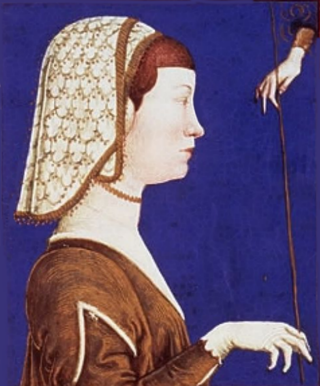
Eleanor of Naples was Duchess of Ferrara by marriage to Ercole I d'Este. She was the first duchess of Ferrara, and mother of many famous Renaissance figures. She was a well known political figure, and served as regent of Ferrara during the absence of her spouse.
Marquis of Castelo Rodrigo was a title of Portuguese nobility created by Philip II of Portugal on 29 January 1600 for Dom Cristóvão de Moura, 1st Count of Castelo Rodrigo. The Moura family claimed its origin from the re-conquest of Moura from the Moors, during the Reconquista in 1165.
The Sicilian title Duke of Bivona stems from the middle 16th century. Bivona is in Sicily, which had been conquered by Peter III of Aragon in 1282. It was given to people related to the powerful medieval Aragonese family of Luna, Zaragoza.
Francesco Pio di Savoia, later in Spain Francisco Pío de Saboya y Moura (1672–1723) was a Spanish nobleman of Italian birth who held numerous hereditary and awarded titles. From his father, in particular, he inherited the title of 3rd Prince of San Gregorio, from his mother the title of 6th Marquis of Castelo Rodrigo and, only nominally, that of 4th Duke of Nocera, with which his younger brother Luigi was instead invested during the Austrian Habsburgh domination of the Kingdom of Naples.

Infante Álvaro, Duke of Galliera was a Spanish Infante, 6th Duke of Galliera, and a second cousin of Infante Juan, heir to the Spanish throne from 1941.
Fernando Ramon Folch De Cardona, 2nd Duke of Cardona,, was a Spanish noble. He became 2nd Duke of Cardona in 1513 and was also Viceroy of Sicily.

Fernando de Aragón y Guardato, 1st Duke of Montalto was the eldest bastard son of king Ferdinand I of Naples and Diana Guardato, one of his mistresses.

Carafa or Caraffa is the name of an old and influential Neapolitan aristocratic family of Italian nobles, clergy, and men of arts, known from the 12th century.

Duke of Alcalá de los Gazules, commonly known as Duke of Alcalá, is an hereditary title in the Peerage of Spain accompanied by the dignity of Grandee, granted in 1558 by Philip II to Pedro Afán de Ribera, 3rd Marquess of Tarifa, Lord of Alcalá de los Gazules and Viceroy of Naples and Catalonia.

Duke of Montellano is a hereditary title in the Peerage of Spain, accompanied by the dignity of Grandee and granted in 1705 by Philip V to José de Solís, Count of Montellano, Adelantado of Yucatán and descendant of Francisco de Montejo. It makes reference to the town of Montellano in Seville.
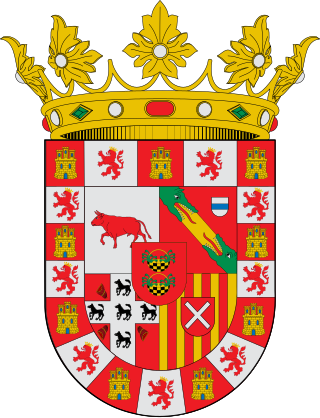
Duke of Ciudad Real is a hereditary title in the Peerage of Spain accompanied by the dignity of Grandee, granted in 1613 by Philip III to Alonso de Idiázquez, 1st Count of Aramayona and Viceroy of Navarre.
Alessandro Pico della Mirandola, known under the pseudonym Abate Pico della Mirandola, was an Italian nobleman and politician, and the last male descendant of the Pico della Mirandola lineage.

Francesco Maria Pico, also known as Francesco Maria II Pico della Mirandola to distinguish him from his father, was an Italian nobleman, third Duke of Mirandola and fourth Marquis of Concordia.
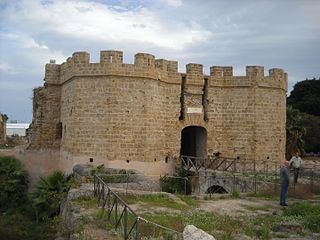
Eleanor de Moura was a Spanish noblewoman of Portuguese birth, notable for serving as Viceroy of Sicily for one month in 1677.

